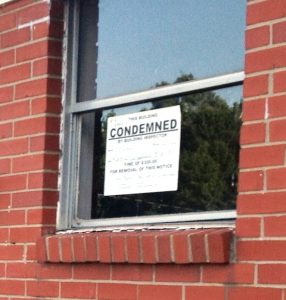
I have been a housing activist in Greensboro for almost 30 years, creating organizations to build homes and to advocate for policies and funding that promote safe, affordable housing.
The broad impact of good places to live:
Imagine unprecedented collaboration to assure opportunities for all in our community to have good places to live.
- Count the new jobs created by the investment in building new houses and apartments and in repairing deteriorating housing.
- Consider the stability of employees without the stress of possible eviction or injury from dangerous housing.
- Celebrate the academic achievements of students who don’t miss class due to housing-related asthma attacks or have to move multiple times in a school year, so they can—YES—prepare for college.
- Calculate the property tax dollars generated by appreciation rather than decline in property values. Welcome the family values of parents and children reunited from costly foster care because they now have good homes.
- Be relieved about neighborhood safety when blighted areas become bright spots, without boarded buildings and vagrancy.
- Rejoice when homeless service providers not only cooperate in connecting individuals to necessary resources but when the housing resources actually exist for them to have permanent homes.
- Do a victory dance when a person’s zip code does not determine one’s life expectancy or the number of trips to the hospital or the risk of getting arrested.
OK, now that you can imagine the transformation, let’s work to become a part of it.
I’ll talk about the opportunities and challenges in Greensboro for the quantity, quality, affordability and other success factors for housing that works for everyone. I’m glad to see engagement on critical housing and social needs with many community partners.
Increasing the quantity of affordable housing:
We need additional housing units. The City of Greensboro has mapped city-owned properties and invited developers to an information session June 28, 2016. UNCG’s Center for Housing and Community Studies is doing an inventory of every parcel in the city to identify development opportunities. UNCG’s Center for Community-Engaged Design can help design efficient, attractive, accessible housing units to blend with a wide range of neighborhoods to address the significant shortage of places for single individuals, extended families, and persons with disabilities. Greensboro City Council is considering a housing bond that can leverage investment and employment in building these homes.
And we need employment so that people can earn enough to pay the rent, circling back to investment in building and repairing housing. Investing in safe, affordable housing now can turn the corner on declining condition of housing stock (and property values) and creates opportunities for people to contribute to a strong economy.
Increasing housing quality:
We need to restore the housing that is currently making people sick or has already been condemned. The Robert Wood Johnson Foundation selected Greensboro for an InvestHealth grant for community planning to reduce disparities in asthma through repairing housing. The InvestHealth team—City of Greensboro, Cone Health, East Market Street Development Corporation, Greensboro Housing Coalition, and UNCG’s Center for Housing and Community Studies—has the vision of reinvestment in the substandard housing of Greensboro, to reduce incidence of pediatric asthma, reduce healthcare usage and cost, and improve educational outcomes.

A recently-published evaluation between Cone Health and Greensboro Housing Coalition showed an average decrease of $7000 in hospital costs for pediatric asthma patients in the first year after housing interventions averaging $1000 per home. Asthma triggers and other housing-related health risks are violations of the minimum housing safety standards and Greensboro has adopted effective code enforcement policies to order repairs when owners do not voluntarily comply. Training in making sustainable repairs—rather than temporary fixes—to make homes “warmer, safer, drier” can prepare our workforce for investment in preserving our housing stock.
Increasing affordability:
Over 26,000 tenants—about one fourth of Greensboro households—pay more than 30% of their income for rent and utilities, leaving so little they can’t afford food, transportation to work, medicines, child care, and other necessities. Workers in the arts/hospitality/food service/entertainment sector (average annual wages just over $15,000) can afford, at most, $387.50 in monthly rent.

At the same time, rental owners cannot provide or adequately maintain housing at that level, so quality (and health) is compromised. But, because the demand for low rents exceeds the supply, owners can continue to find tenants without making repairs.
Creative approaches to rental supplements are needed to stabilize tenancy for low-wage workers and persons with disabilities and to require their landlords to meet minimum safety standards. Matthew Desmond’s highly-acclaimed book EVICTED: Poverty and Profit in the American City vividly describes the lives of struggling tenants and rental owners, stories that mirror the hundreds of Greensboro families that emergency assistance resources hear every day.
Supporting access to and success in housing:
Certainly many individuals and families also need housing counseling, housekeeping education, employment, and—often—mental health services—to address their complex and even multi-generational barriers to stable housing. Constantly moving from the proverbial “frying pan to the fire”, from one eviction to another condemned unit, compromises their health, cognitive, and behavioral capacity.
With wrap-around supportive services, even chronically homeless persons with severe mental illness can successfully maintain permanent housing. “Housing First” has been demonstrated as best practices. Greensboro Housing Coalition and Guilford County Social Services are showing the same success with Child Protective Services families by providing housing assistance to return children from foster care, saving the financial and social cost. Foster care is expensive and too many youth become homeless in the years after they age out of foster care.
High quality services, comprehensive and integrated, can connect fragile individuals and families with a full range of community resources and can remove the barriers in navigating the housing system. United Way’s Ready for School/Ready for Life and Say YES to Education are wonderful opportunities for collaboration to help families prepare children for success. Healthy and stable homes contribute to better educational performance and preparation for the job-skills of the future. Connecting these great initiatives with housing resources is key—but we need to have enough safe places where the families can afford to live.
We need to close the gap between the actual cost of housing and what people can afford to pay the rent, circling back to investment in building and repairing housing. Investing in safe, affordable housing now can turn the corner on declining condition of housing stock (and property values) and creates opportunities for people to contribute to a strong economy.

What can we do?
- Consider business investments in affordable housing.
- Connect your organization’s work with these collaborative strategies.
- Contribute to nonprofits which are building or repairing homes and providing housing services.
- Support the housing bond.
Send your comments and ideas. It takes all of us.
John Stephens adds: Also see Beth’s previous post Cottage Grove for LIFE! Greensboro Neighborhood Redevelopment
Beth – very promising developments. I have two questions:
a. How is the tension between landlords making good repairs, and adding to their costs and possibly pressures for higher rents to cover those costs – vs. – keeping rents affordable playing out? Seems there is a Catch-22 there.
b. Where does housing vouchers fit in the mix (RE: federal supported ways to give low income families greater buying power when seeking housing)? For example, one issue is the willingness of landlords to work with that program. Here is a 6/29 editorial about the challenge in Durham: http://www.newsobserver.com/opinion/op-ed/article86456302.html
Thanks.
Thanks for your thoughtful post, Beth! I just finished reaching Evicted:Poverty and Profit in the American City (http://www.evictedbook.com/) by Matthew Desmond, about the business of cheap rental housing and impacts of evictions on families in Milwaukee. He suggests that we need to include housing (shelter) as a basic human right, like we do for food, and create a universal voucher program for housing. Per John’s comment, I’m curious if others have thought about this or heard about places where cities have taken this on– much like recent moves toward universal preschool.
It is a huge challenge to make housing both safe and affordable. With the enormous gap between the large number of families with very limited income and the shrinking supply of safe, affordable housing units, rental owners have few resources and almost no incentive for maintenance, because someone will always be desperate to rent even the worst places. Federal voucher programs pay a portion of the rent for housing units that have passed Housing Quality Standard inspections–but voucher programs have long waiting lists for tenants and rental owners may refuse to accept the vouchers.
Therefore, we need to be creative in order to design rental supplements to bridge the gap and rovide basic stability and safety for tenants, are acceptable to rental owners, and encourage mutual responsibility rather than adversarial relationships. I welcome ideas for the ways to structure and administer rental supplements that can effectively and efficiently address these concerns.
Substantial resources will be necessary to implement these rental supplements but the benefits will likely exceed the cost, in terms of reducing health costs, blighted conditions deteriorating property values, and turnover costs in rental housing. Housing should be a basic right but we need broad input to plan workable ways of reaching the goal of good places for everyone to live.
Beth – This is a wonderful post and I am really impressed by Greensboro’s efforts in this area! I have recently been working with Hanna Cockburn in Greensboro on some planning initiatives around food systems. The Greensboro Fresh Food Access Plan is an excellent development there also – working to alleviate some of the same issues you mention by utilizing existing City resources (like Parks & Rec centers) to increase access to fresh food in all neighborhoods (http://www.greensboro-nc.gov/index.aspx?page=4820). I hope you all can continue to work on these important issues together – as you mention, the right to safe housing and the right to food are both basic human needs, that all too often aren’t met for so many. Thanks for your wonderful insights!
Emily
Emily, as a vegetable farmer and vendor at the Greensboro Farmers Curb Market and as a partner with the Cottage Grove neighborhood where residents are planting gardens, I see the many connections between access to good food and to safe affordable housing. Where we live and whether we have income for food after paying rent impacts everything else in our lives. When people who have low wages or disability income are concentrated in some communities because they cannot access affordable housing throughout the city, those areas become food deserts and investment in housing maintenance declines. That is why I am committed to expanding opportunities for people to have good places to live.